Photos: Cropmarks Reveal Traces of Lost Civilizations in England
Neolithic Cursus
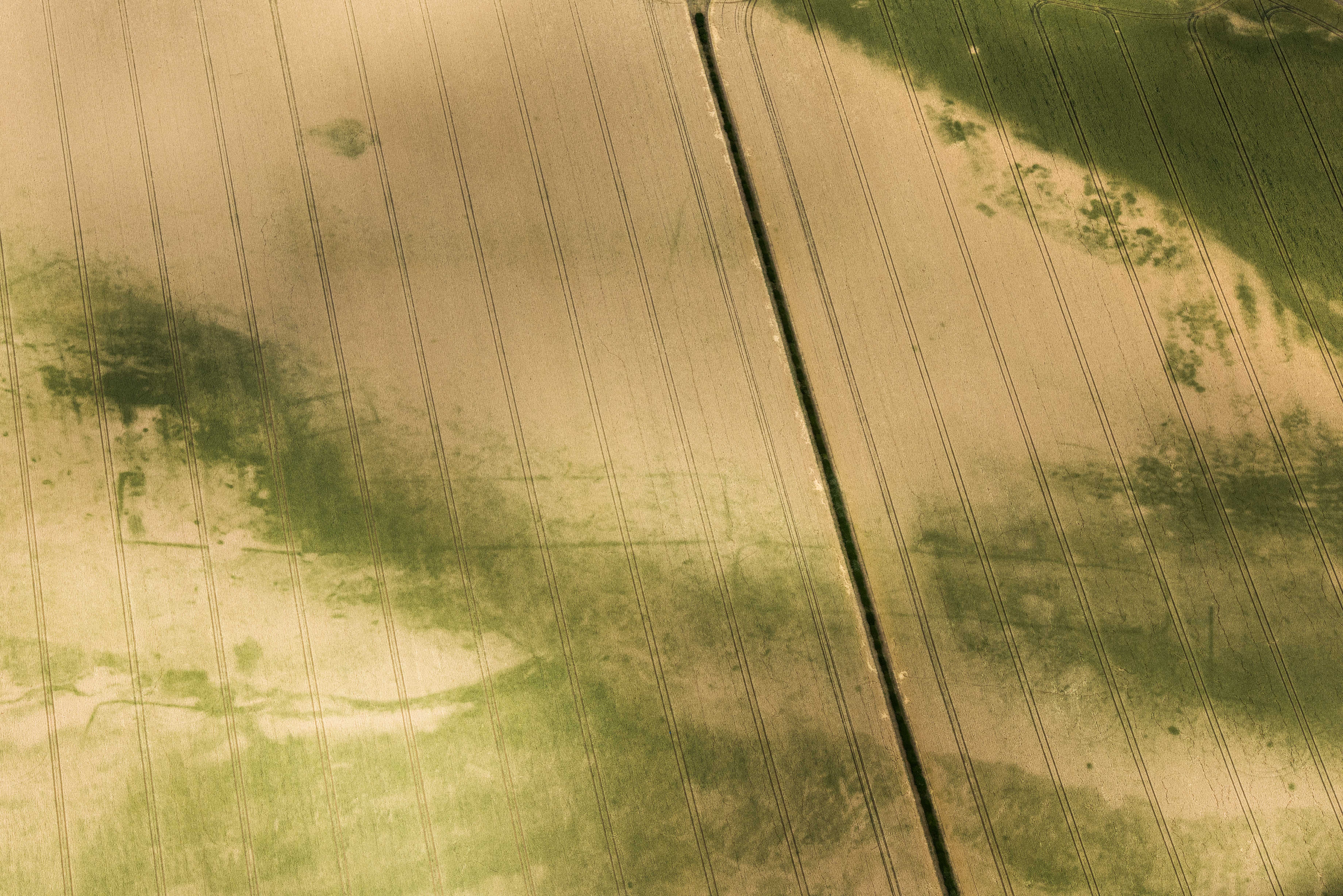
The rectangle cropmarks found near Clifton Reynes, Milton Keynes reveal two Neolithic cursus monuments that likely date to between 3600 and 3000 B.C. Though the monument to the left was recently found as part of another project, the one on the right was hidden under a headland that is now being ploughed. Archeologists aren't sure how ancient people used cursus monuments but guess that they may have been enclosed paths, processional ways or even boundaries between different landscapes.
Iron Age Round

This circular cropmark found in St. Ive, Cornwall probably comes from a roundhouse that dates back to England's Iron Age, between 800 B.C. and A.D. 43. These types of settlements, with a circular bank and outer ditch that contains one entrance and a round house close to the edge of the ditch, was common in Cornwall at that time.
Prehistoric Settlement
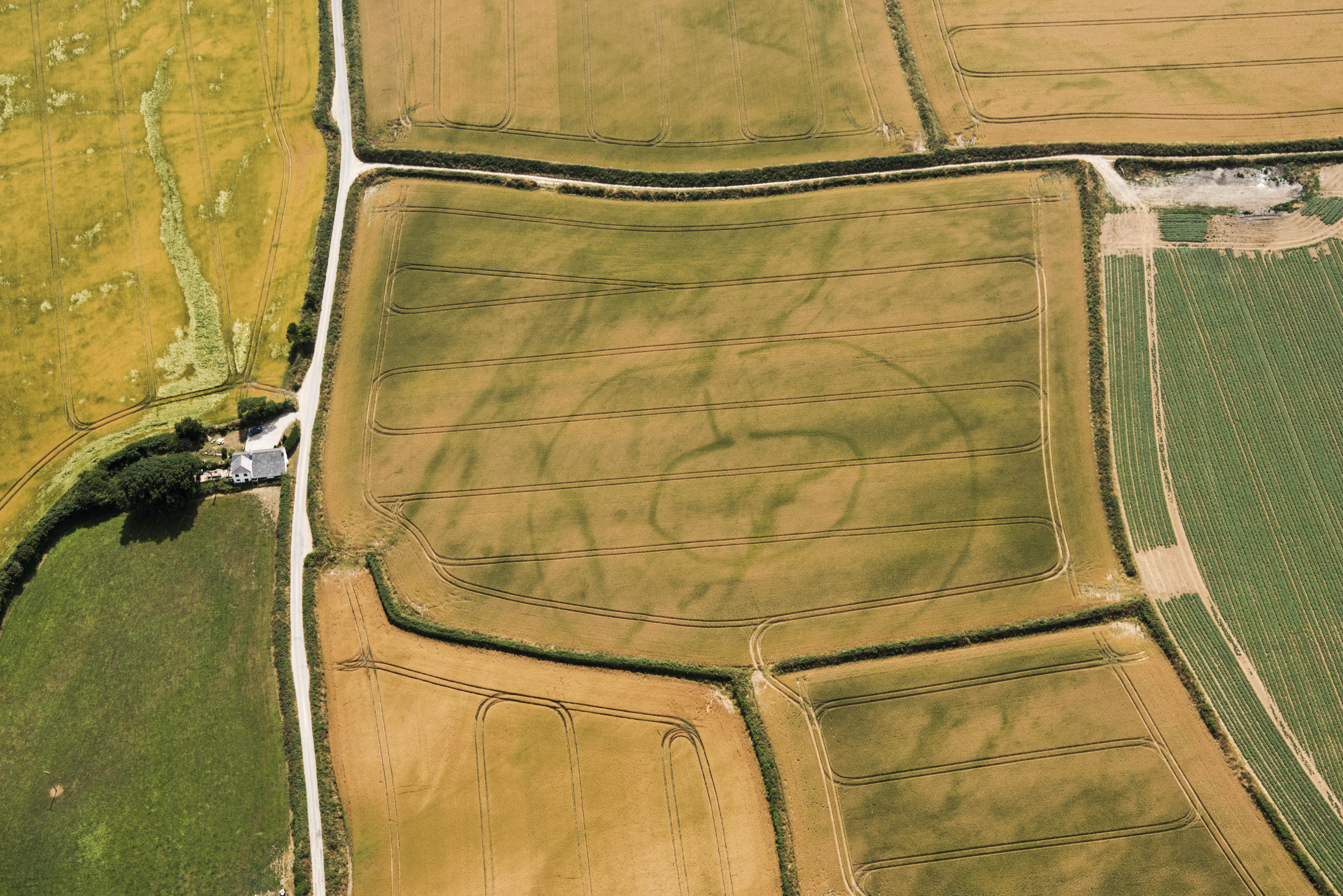
These cropmarks reveal a prehistoric settlement in Cornwall. This unusual layout consists of two concentric ditches with an entrance connected by two parallel ditches. The inner ditch could have enclosed a Bronze or Iron age settlement, whereas the outer ditch could have been used as a means to manage livestock later in history.
Square Barrows
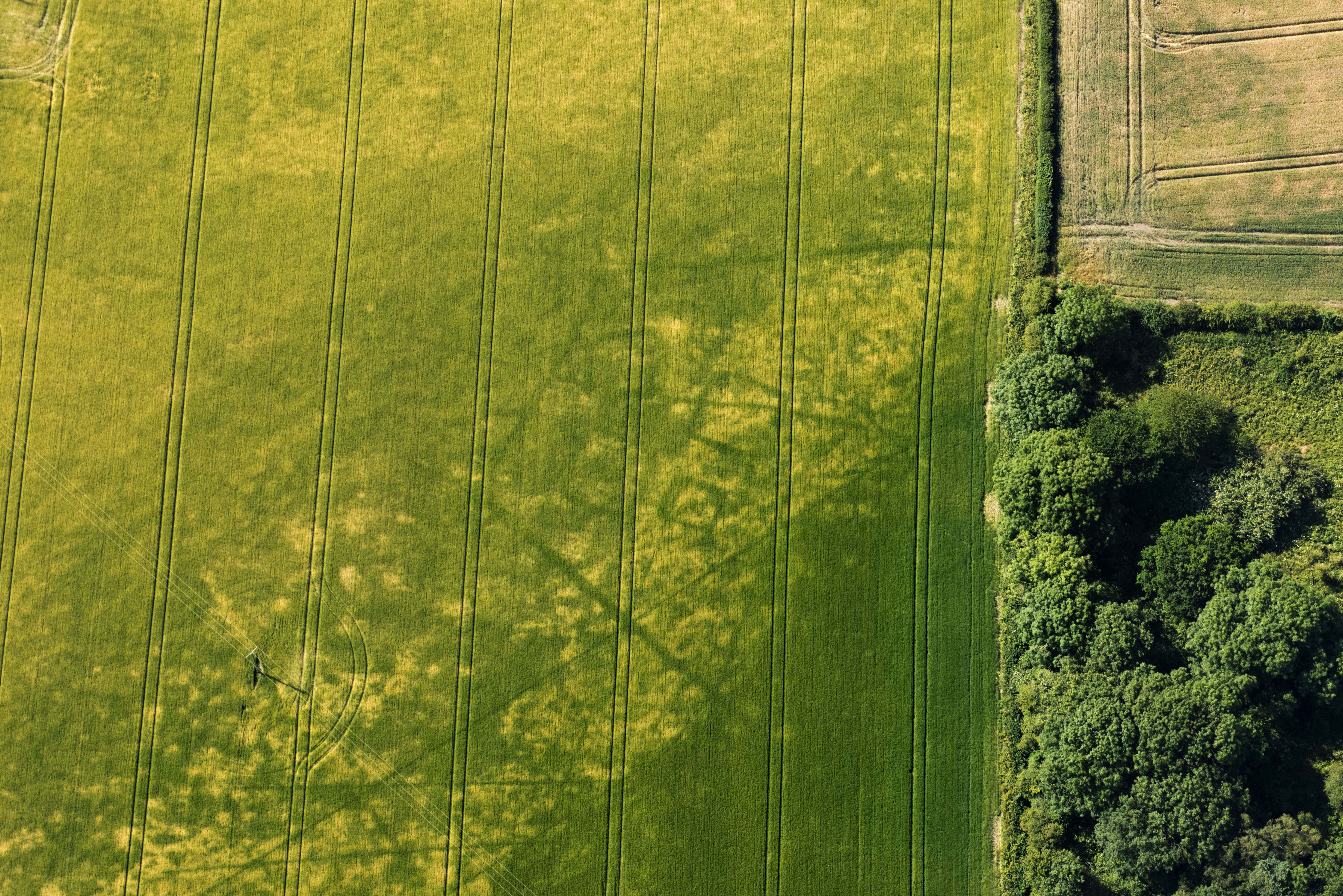
In Yorkshire, the archaeologists found four cropmark squares that likely reveal ditches enclosing a burial mound. These Iron Age square barrows are common in this area.
Burial Mound
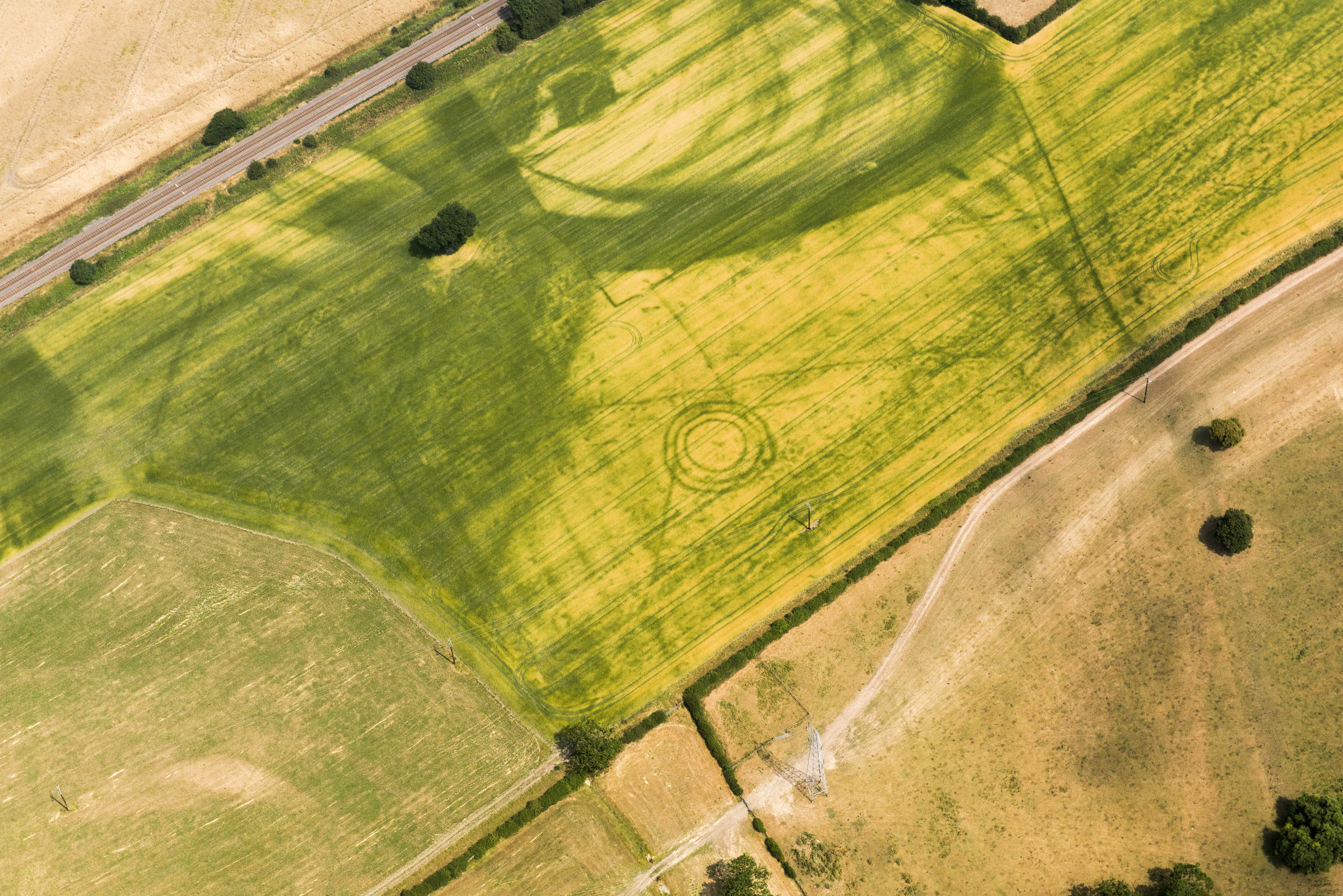
These circular cropmarks found in Scropton, Derbyshire likely depict a complicated structure from a Bronze age burial mound or a barrow.
Prehistoric Cemetery
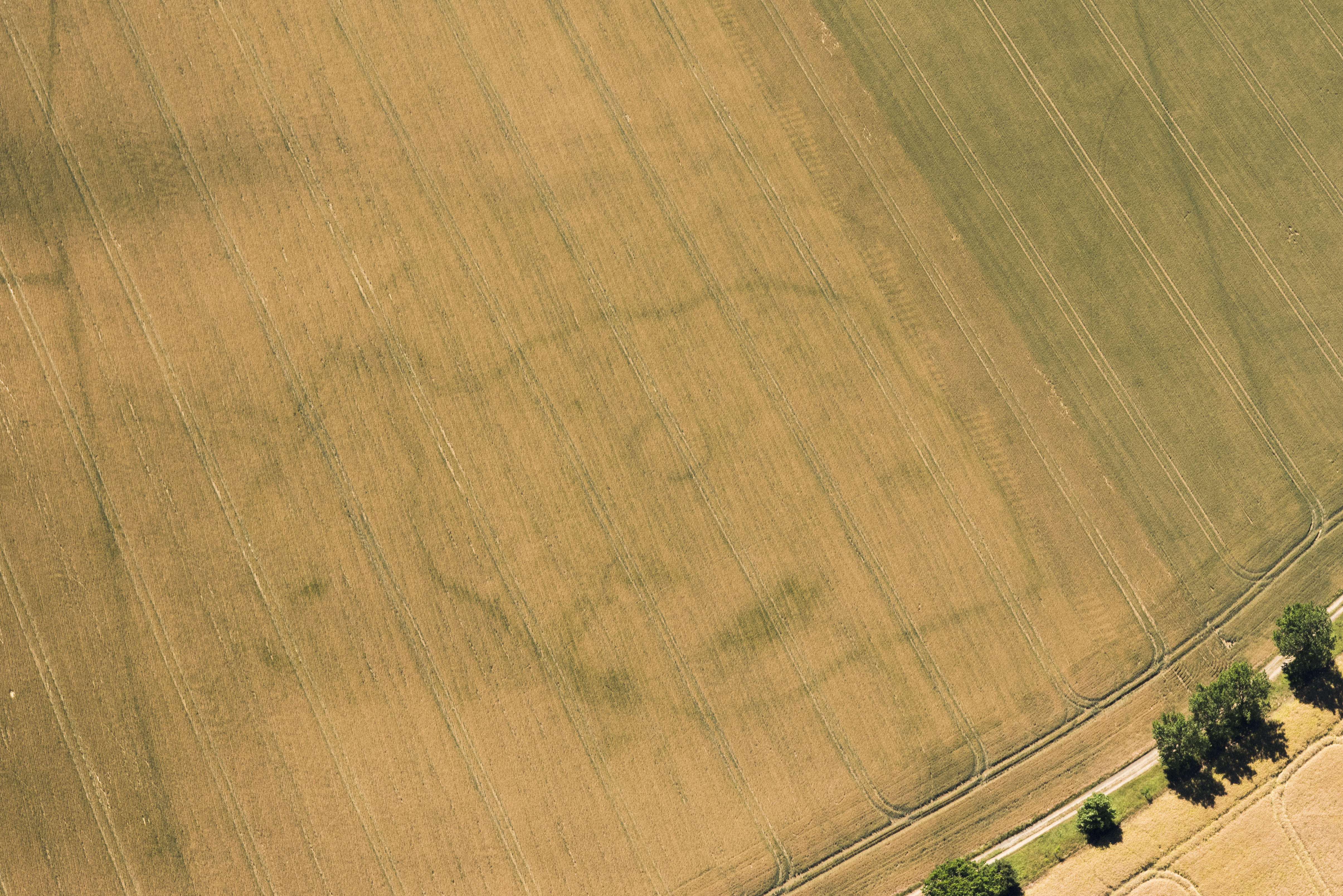
These cropmarks found in Clare, Suffolk belong either to a prehistoric settlement or a cemetery. There is an entrance at the top left and two circles inside that could be ditches surrounding Iron Age round houses or Bronze Age burial mounds.
Roman Farm

In Bicton, Devon, archeologists found cropmarks likely depicting a Roman farm. The square in the center could have contained farm buildings surrounded by fields and paddocks.
Get the world’s most fascinating discoveries delivered straight to your inbox.
Prehistoric Farm
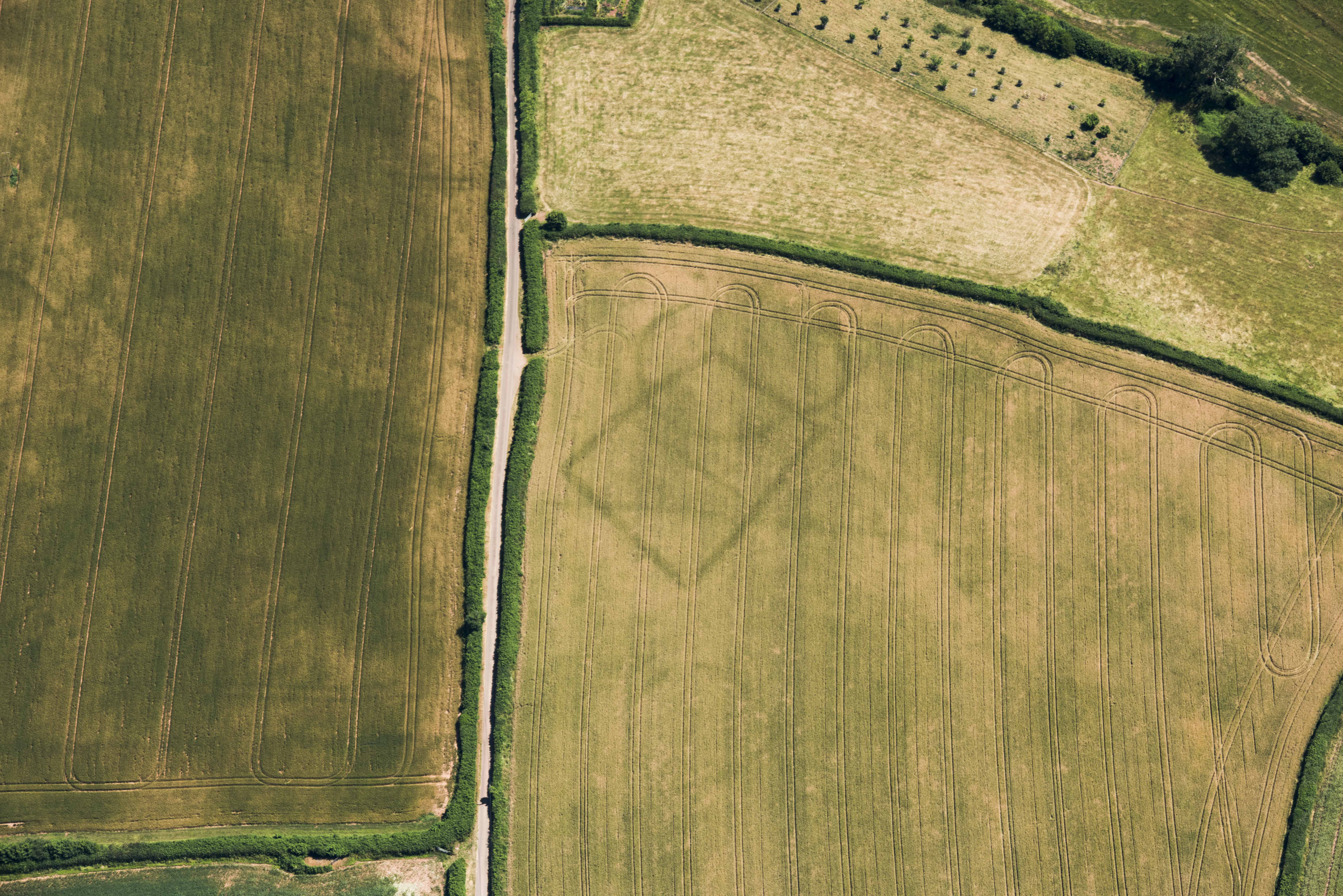
These cropmarks found in Somerset, likely reveal prehistoric farms from the Bronze or Iron age.
Prehistoric Ditch
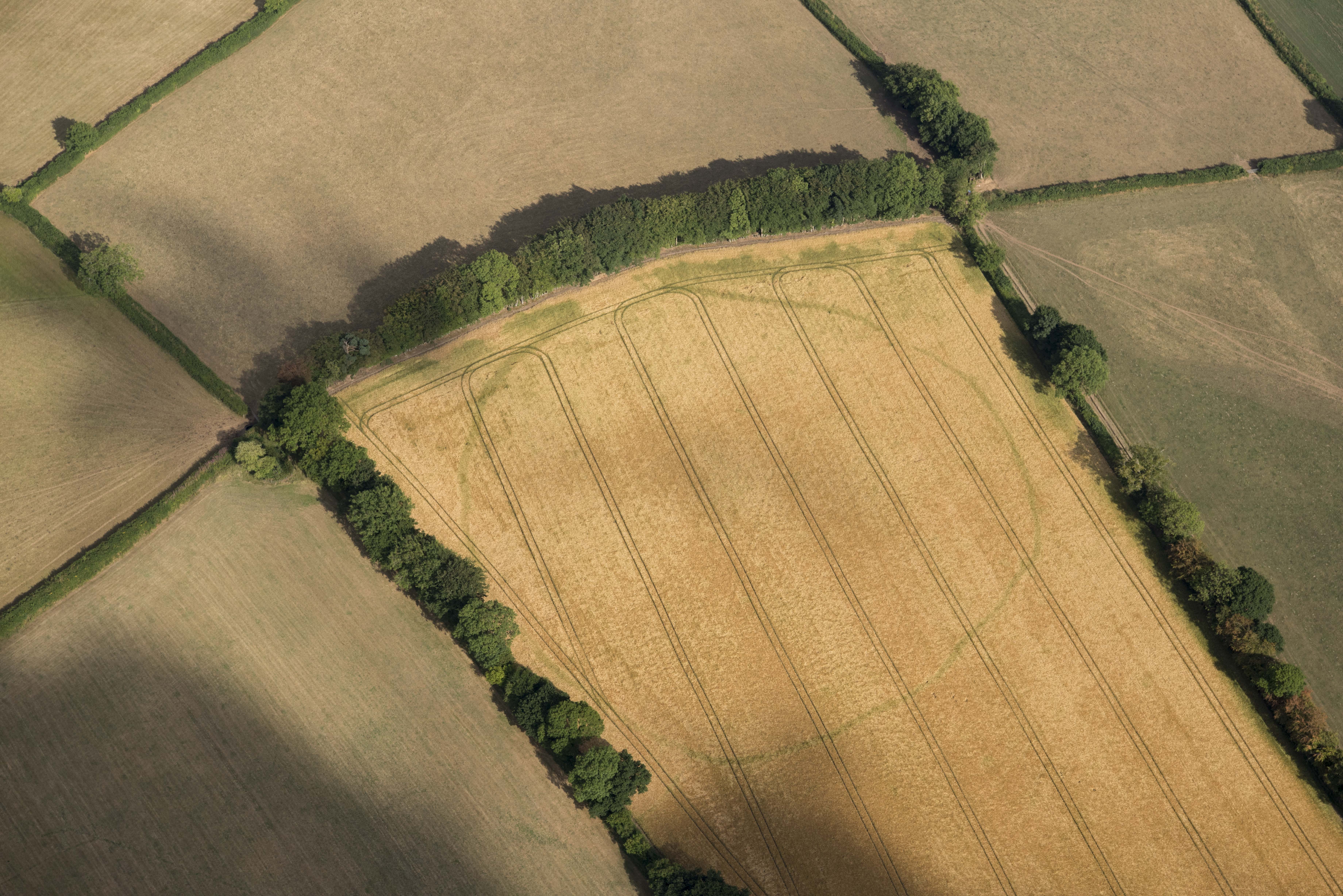
This circular cropmark found in Churchstanton, Somerset is probably a prehistoric enclosure surrounded by a thin ditch with an entrance at the top.
Intermingling Marks
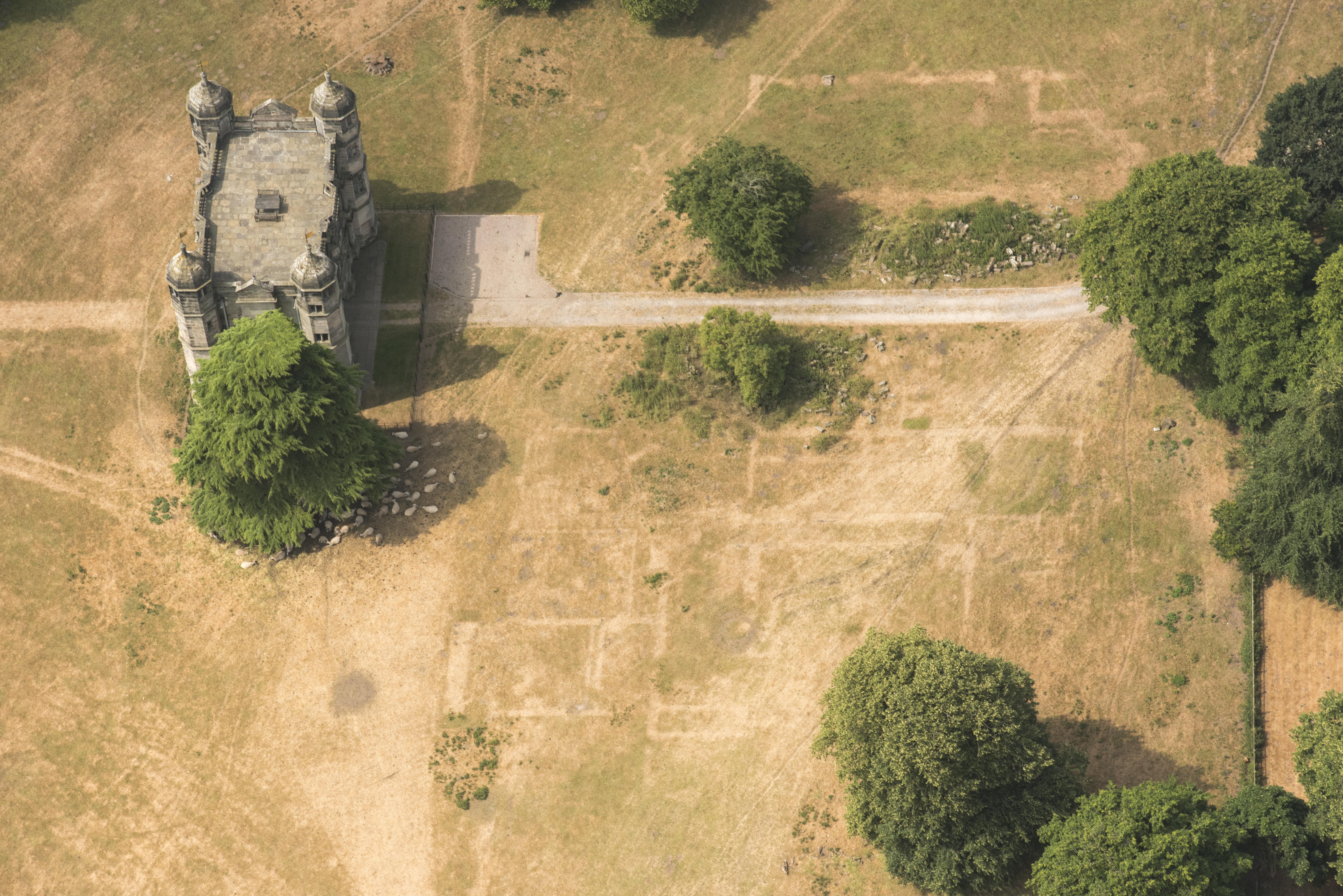
To the right of a gatehouse built in 1557, there are cropmarks that mark where the grass is dying over another building, Tixall Hall, that was built in 1555. These marks are intermingled with others that depict the foundations of a partially-built hall demolished in 1926.
Ceremonial Landscape

This protected site, a prehistoric ceremonial landscape that dates back to around 4000 B.C. to 700 B.C. in Eynsham, Oxfordshire, has been known to exist for some time. But this new survey revealed some new, previously unknown features, such as a circle of pits.

Yasemin is a staff writer at Live Science, covering health, neuroscience and biology. Her work has appeared in Scientific American, Science and the San Jose Mercury News. She has a bachelor's degree in biomedical engineering from the University of Connecticut and a graduate certificate in science communication from the University of California, Santa Cruz.


